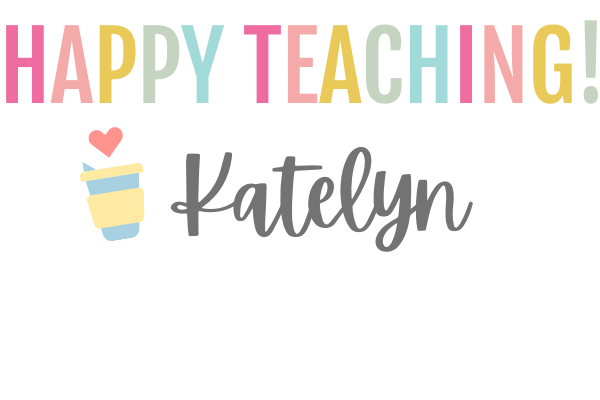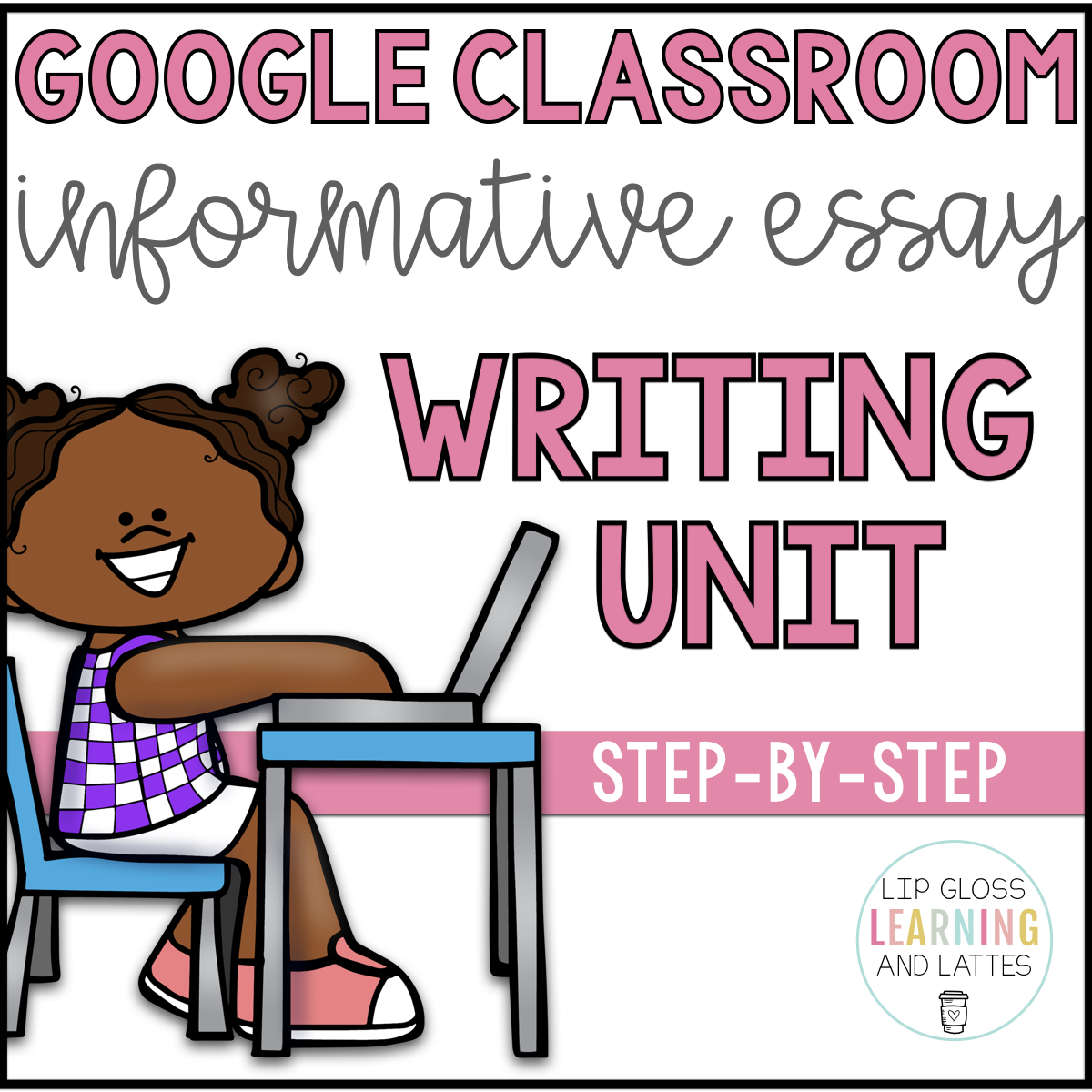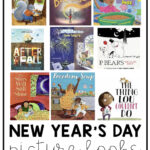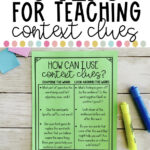Before students begin creating their own informational pieces, it’s important that they see a variety of informative passages and texts. They need to really be able to distinguish what makes this type of writing different from Fiction. A simple T chart to show the differences of informational and fiction writing and work good to get the conversation started.
Learning the Framework
I like to spend the remaining time giving students the opportunity to see lots of informative texts in several different forms. Newspapers, website articles and non-fiction books all work great to show students different forms of this genre of writing. After they have had a chance to look through the different texts on their own, I like to have them point out what they notice. This gives them a chance to focus on some of the features they’ll need to include in their own writing.
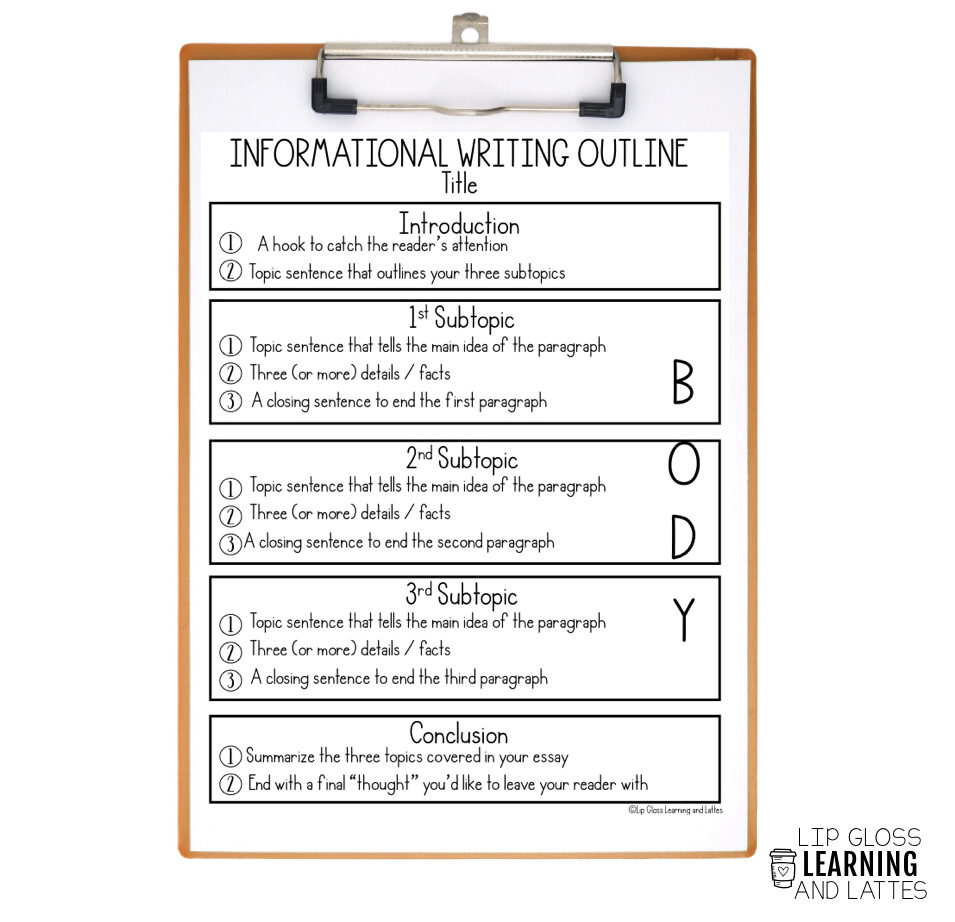
When it’s time for them to begin writing and we’re focusing on the particular layout of an informative essay, I always have an anchor chart like the one above on display. This is a constant point of reference to allow students to check the structure of their own essays. Grab this FREE Informational Writing Outline at the bottom of this post!
Choosing a Topic
One of the most difficult parts of informative writing starts before the actual writing begins!
Having students choose a topic that they are actually able to research and write about can be tough. The problem isn’t that they don’t have any interests ( well there’s always that one student), but instead they have an abundance of interests they want to tell you all about! Unfortunately, sometimes their interests don’t lend themselves to meaningful essay material.
I like to prepare a list of broad topics for students to use. Then, have them fill in with their more specific interests. This allows them to have freedom in choosing topics of interest to them, but still lets me guide them in the right direction. Some of the topics may include: people, animals, historical Events, weather, and so on.
I like to dedicate an entire class period to allowing students to fill out their lists. After I give students some time to brainstorm topics for their lists independently, I like to have them share ideas as a whole group. Then, students save these lists and come back to them throughout the year when needed.
Narrowing or Broadening Their Topic
One common frustration students find when choosing a topic, is selecting one that’s either much too broad or too narrow. They’re so thrilled to have chosen a topic and then the excitement quickly dwindles as they become overwhelmed actually trying to construct an essay around it.
I like to make my students aware of this before they begin and then give them some practice narrowing and broadening a few sample topics. When it comes time to choose their own topic, I want to make sure they’ve chosen one their able to generate meaningful subtopics on.
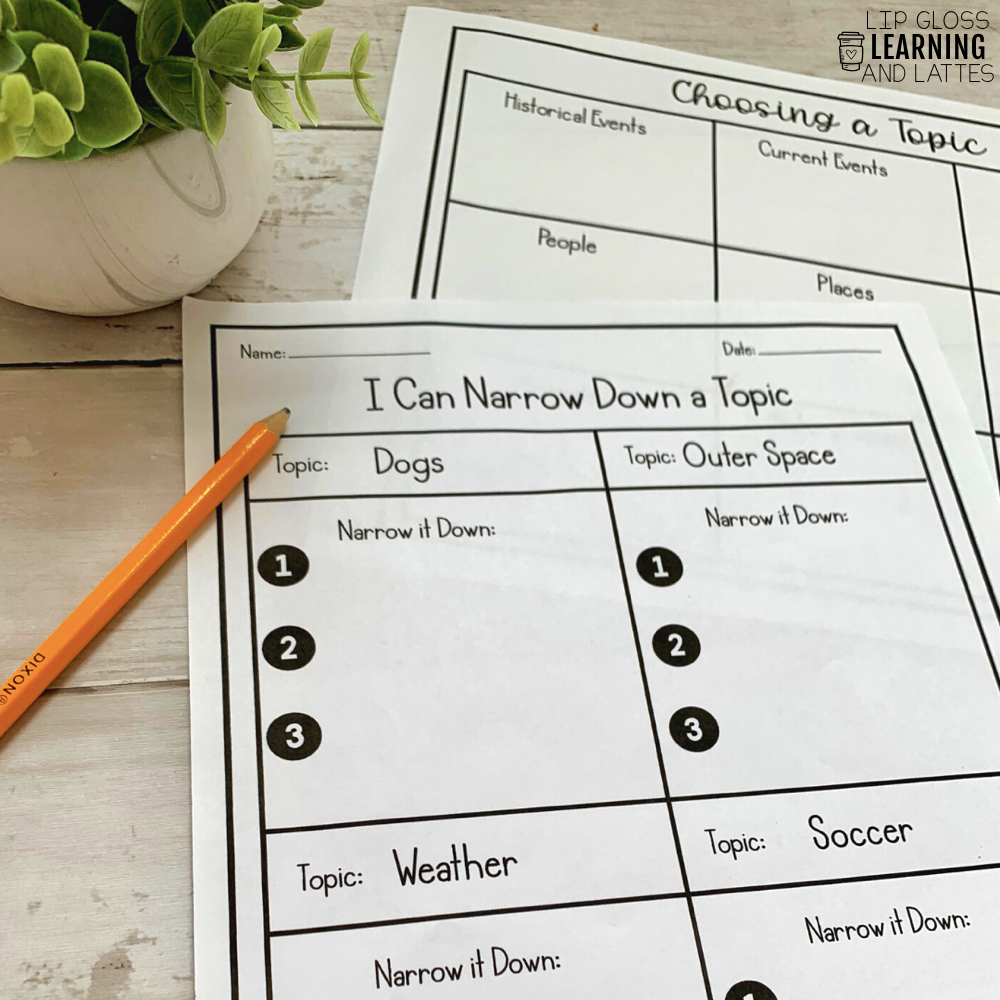
Once they’ve chosen a topic, I have students begin to list subtopics underneath the topic they chose. If they are able to provide three, meaningful and relevant subtopics, then they are ready to move on to the next steps of writing their informative essays! Sometimes having them talk with a partner about the subtopics they’ve chosen, leads them to realize they need to pick another topic that they are better able to write about.Grab these graphic organizers to help your students choose and narrow down their topic at the bottom of this post!
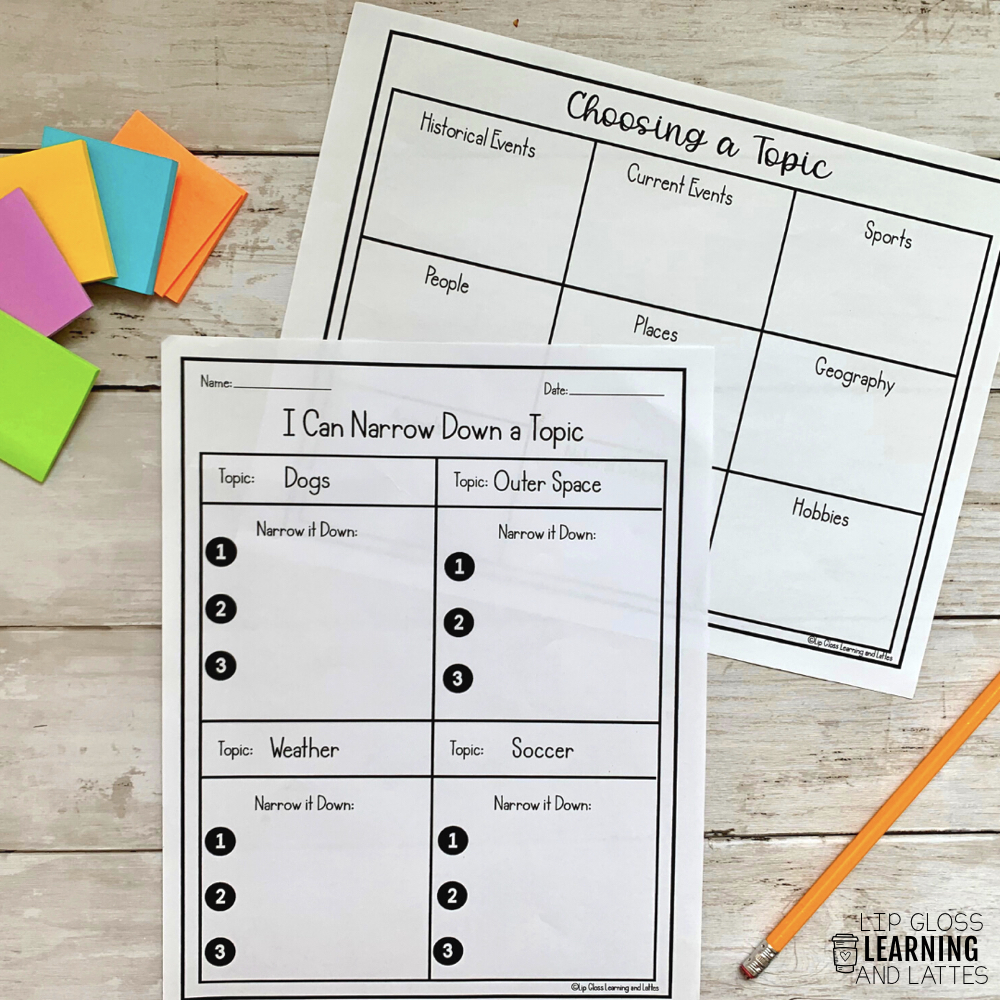
Writing a Lead and Concluding Sentence
So now that all of the research is complete and the body of their essay is close to finished, students need to come up with a lead to begin their informative essay and a concluding sentence to end it.
I like to give my students a few strategies and then leave the choice up to them on how they’d like to begin and end their essays. Grab this FREE What is a Lead Anchor Chart at the bottom of this post!

Strategies to Begin Informative Essays Are:
- State an Interesting Fact or Statistic
- Include a Famous Quote
- Be Very Descriptive (Set the Scene)
- Begin By Asking a Question
Strategies to End Informative Essays:
- Use Humor
- End With a Question
- Mention the Future
- Use Excitement
Before I have students use these strategies in their own writing, we look at examples of each type of lead and concluding sentence. This gives them a point of reference on how their own sentences may look. Then I have students create a sentence to go with their essay using each type of lead and closing. Doing this does take a bit of time, but it gives them the chance to get some practice using each strategy and choose the best ones for their essays.
You ming be interested in this Informational Digital Writing Unit!
